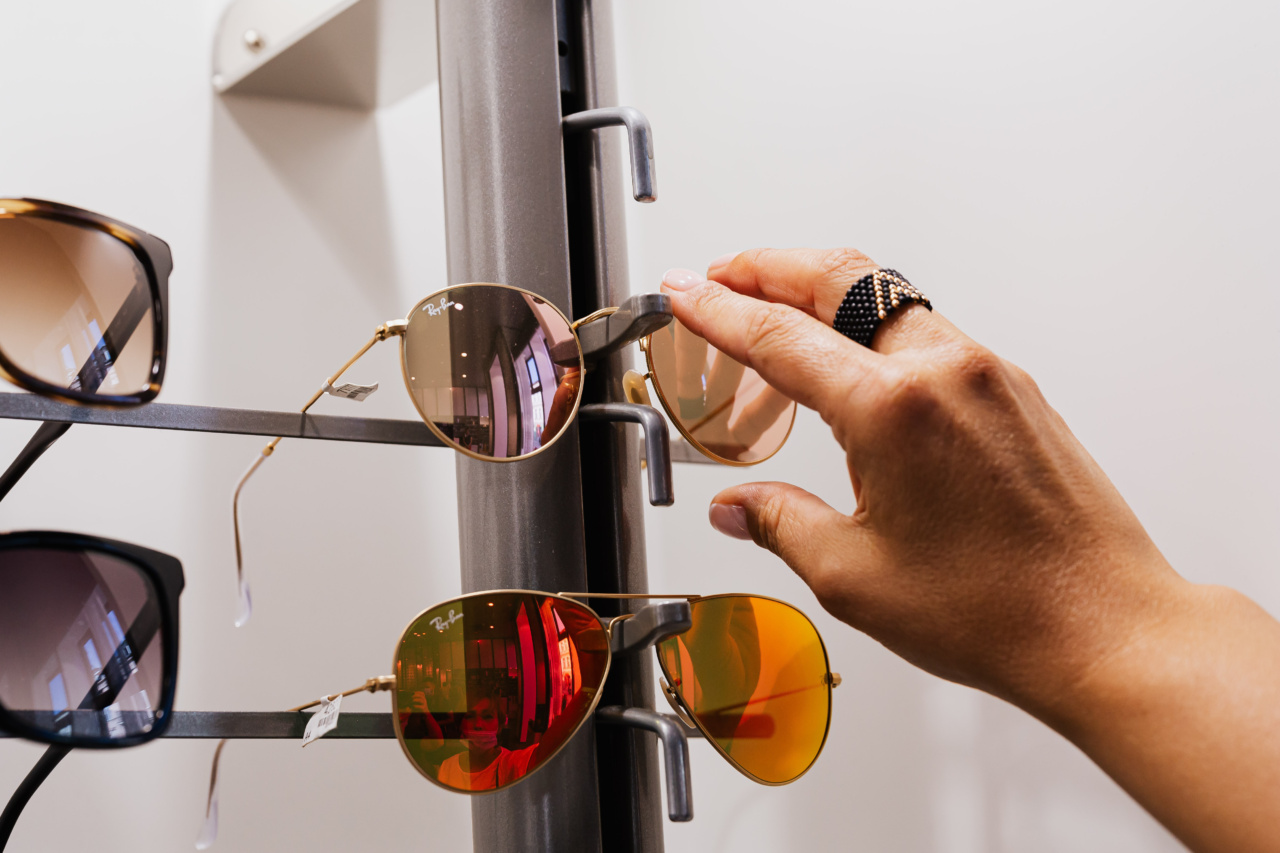Sunglasses are more than just fashion accessories; they are an essential item for protecting your eyes from harmful UV radiation. With so many different types of sunglasses on the market, it can be challenging to know which ones to choose.
Here are some top considerations for selecting the right sunglasses:.
1. UV Protection
The most crucial factor to consider when choosing sunglasses is UV protection. Ultraviolet (UV) radiation is harmful to your eyes, and overexposure can lead to various eye problems, such as cataracts, macular degeneration, and even cancer.
Ensure your sunglasses can block both UVA and UVB rays.
2. Lens Color
The color of the lens you choose depends on your needs and preferences. Different shades of lenses have different benefits.
For example, gray color lenses are excellent for reducing brightness without distorting colors, while brown lenses are ideal for enhancing contrast in low light conditions. Green lenses, on the other hand, are useful in reducing glare, and yellow lenses can improve visibility in foggy or hazy conditions.
3. Polarization
Polarized lenses are excellent for reducing glare from surfaces like water, snow, and glass. They work by blocking horizontal light waves, which cause glare.
However, they may not be suitable for certain activities like downhill skiing, as they can make it challenging to see patches of ice.
4. Frame Material
The material used to make the sunglasses frame will determine the durability, weight, and comfort of the sunglasses. Materials like plastic are lightweight and affordable, while metal frames are durable and sturdy.
5. Frame Shape
The shape of the sunglasses frame should complement your face shape and provide adequate coverage for your eyes. Different face shapes require different frame styles.
For example, oval and round faces look best with rectangular or square frames, while heart-shaped faces suit cat-eye or round frames.
6. Size and Fit
Ensure the sunglasses fit your face properly, with the lenses blocking the sun from all angles. Sunglasses that are too tight or loose can cause discomfort or fall off easily.
Measure the distance between your temples to ensure the sunglasses fit correctly.
7. Lens Coatings
Some sunglasses come with lens coatings that provide additional benefits like scratch-resistance, water repellence, and anti-reflective properties. However, these coatings add to the cost of the sunglasses.
8. Brand Reputation
Choose sunglasses from reputable brands with a track record of producing high-quality, durable products. Look for reviews and ratings from other customers to ensure that the sunglasses you purchase are of good quality.
9. Activity-Specific
Consider the activities you’ll be doing when wearing your sunglasses. Different activities, like hiking, biking, or skiing, may require sunglasses with specific features like wrap-around frames, impact-resistant lenses, or anti-fog coatings.
10. Price
The price of sunglasses varies widely, from less than $10 to over $500. Consider your budget when selecting sunglasses.
While high-end brands may offer additional features and high-quality materials, you can still find affordable sunglasses that provide complete UV protection and are durable and comfortable.



























